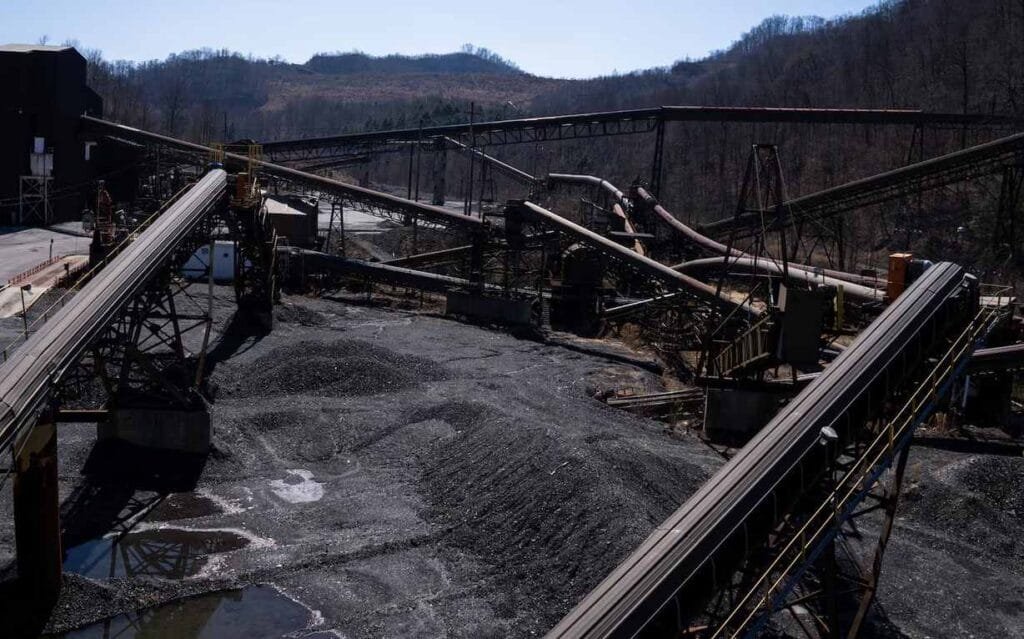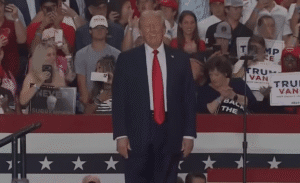“He sold us lies for votes”: Coal Miners In Deep Red States Turn On Trump Over Black Lung Crisis

Many coal miners across Appalachia are voicing anger and disappointment at former President Donald Trump, saying his administration failed to protect them from black lung disease, a deadly illness linked to coal and silica dust exposure.
A group of miners and their families are preparing to protest outside the Labor Department on Tuesday, demanding that the federal government enforce long-promised safety limits on silica dust, which scientists say is driving a new surge of black lung cases among younger miners, according to The New York Times.
“The companies might be getting a handout, but the miners ain’t getting none,” said Gary Hairston, 71, a retired West Virginia coal miner and president of the National Black Lung Association. Hairston was diagnosed with black lung disease in his 40s and now advocates for stricter protections.
He said what used to be considered an “old man’s disease” is now striking miners in their 30s and 40s. “It’s heartbreaking,” Hairston added. “We worked hard all our lives, and now these young folks are paying the price for the same mistakes.”
Another retired miner, Andy Martin, 68, from Virginia, said silica dust, a fine, toxic substance released during coal cutting, is the real killer. “It’s not the coal that’s getting them, it’s the silica,” Martin said. “We need to get this done for the younger generation.”
Federal Delays and Industry Pushback
Federal regulators under the Trump administration delayed new silica safety standards that were supposed to take effect in April. The proposed rule would have forced mining companies to reduce dust exposure by using better ventilation systems and engineering controls rather than relying on respirators alone.
But industry lobbying groups challenged the rule in court, arguing it would be too costly for coal companies. “We are absolutely supportive of the new lower levels,” said Conor Bernstein, a spokesperson for the National Mining Association, though he added that implementation should be “practical and balanced.”
Instead of defending the rule in court, the Trump administration declined to intervene and even tried to block labor unions and health advocacy groups from joining the case. Critics say this effectively stalled progress on protections that could have saved lives.
Families Feel Abandoned
For miners and their families, the sense of betrayal runs deep. Judith Riffe, 80, of Wyco, West Virginia, lost her husband, Bernard, in March to complications from black lung disease. She said the government’s failure to act has left families like hers “heartbroken and forgotten.”
“Sure, they talk about how much they care about coal,” Riffe said, “but come down here and look. The coal miners have supplied this country with electricity, and now they’re just cast aside to die.”
She said that while coal production in her region has picked up, workers see little benefit. “They’re mining a lot more now, the trucks are running day and night,” she said. “But there’s no help coming in for the miners themselves.”
The Bigger Picture
Health experts say black lung, formally known as coal workers’ pneumoconiosis, is entirely preventable. Yet new cases have risen sharply over the past decade, especially in central Appalachia. Many doctors attribute this resurgence to long-term exposure to silica dust, which is more toxic than coal dust and harder to control.
The Centers for Disease Control and Prevention (CDC) reports that younger miners are now being diagnosed with more severe forms of the disease, often requiring oxygen or lung transplants by middle age.
Despite Trump’s campaign promise to “bring back coal,” miners say his administration’s decisions favored corporations over worker safety.
Hairston said the upcoming protest is about more than politics; it’s about justice. “We ain’t asking for much,” he said. “Just clean air to breathe and a chance for these younger miners to live long enough to see their grandkids.”





